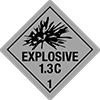Filter by
Mount Type
Message Type
Message
Accident Prevention Message Type
Color
Message Contains
Message Color
Header Color
Specifications Met
Export Control Classification Number (ECCN)
DFARS Specialty Metals
Thickness
About Accident Prevention Signs
More


















































































































































